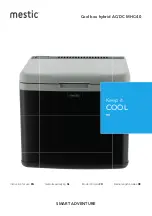
Rittal Liquid Cooling Package
11
3 Device description
EN
3.2
Air routing
3.2.1
General
In order to achieve sufficient cooling in the server en-
closure, it is important to ensure that the cooling air
passes through the interior of the built-in units and is
unable to flow past at the sides.
Targeted air routing in the server enclosure has a ma-
jor effect on the heat loss to be dissipated.
In order to ensure targeted air routing in the system,
the server enclosure should be divided vertically into
warm air and cold air sections. The division is accom-
plished in the front section of the server assembly to
the left and right of the 482.6 mm (19") level using
foam strips or air baffle plates which, depending on
the enclosure width and the number of server enclo-
sures to be cooled, can be ordered as an accessory
(see section 15 "Accessories").
If devices which require sideways air throughput are
built into the server enclosure (e.g. switches, router,
etc.), these may be cooled through targeted place-
ment of the foam strips or air baffle plates.
3.2.2
LCP Rack
The LCP Rack may be bayed on the right or left of a
server enclosure, according to preference.
Fig. 5:
LCP Rack on a server enclosure
The LCP Rack may also be bayed between two server
enclosures.
Fig. 6:
LCP Rack on two server enclosures
Together with the bayed server enclosure, the LCP
Rack forms an airtight cooling system with horizontal
air routing. It places no additional demands on the
room's climate control system.
Note:
The 482.6 mm (19") level must likewise be
completely sealed. This is already the case
in a fully equipped server enclosure. If the
server enclosure is partially equipped, the
open height units (U) of the 482.6 mm (19")
level must be sealed with blanking plates,
which are available from Rittal Accessories
(see section 15 "Accessories").
As more devices are installed in the server
enclosure, it becomes even more important
to follow this specification.



























